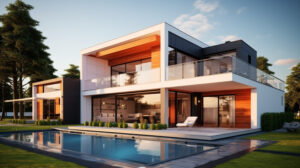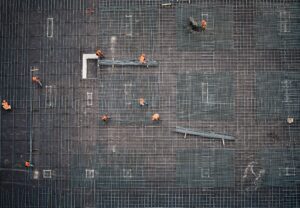In the ever-evolving construction industry, the demand for materials that combine durability, aesthetics, and sustainability is at an all-time high. One such material that has garnered widespread attention is Glass Reinforced Concrete (GRC). This innovative composite material has become a cornerstone in modern construction sites, offering unparalleled benefits to architects, engineers, and builders.
What is GRC?
Glass Reinforced Concrete (GRC), also known as Glass Fiber Reinforced Concrete (GFRC), is a mixture of cement, fine aggregate, water, polymer, and alkali-resistant glass fibers. These glass fibers serve as reinforcement, significantly enhancing the material’s strength and flexibility. GRC is versatile, lightweight, and incredibly durable, making it an ideal choice for a range of construction applications.
Applications of GRC in Construction
1. Facade Cladding:
GRC is extensively used for creating stunning facade cladding panels. Its lightweight nature reduces structural load, while its design flexibility allows architects to craft intricate patterns and textures that enhance a building’s aesthetic appeal.
2. Decorative Elements:
Modern construction often demands intricate decorative elements such as cornices, columns, and sculptures. GRC’s moldability enables the production of complex shapes with high precision, catering to both contemporary and traditional architectural styles.
3. Precast Components:
GRC is widely used for manufacturing precast components like wall panels, roofing elements, and drainage channels. These components are not only durable but also quick to install, reducing construction timelines and costs.
4. Landscape Features:
GRC is ideal for creating landscape features such as planters, benches, fountains, and retaining walls. Its weather resistance ensures longevity, even in harsh outdoor conditions.
5. Fire-Resistant Structures:
Thanks to its non-combustible properties, GRC is a preferred material for fire-resistant barriers and enclosures, enhancing safety on construction sites.
Advantages of Using GRC
1. Lightweight Yet Strong:
GRC offers an excellent strength-to-weight ratio, making it easier to handle and transport while maintaining structural integrity.
2. Design Versatility:
Its ability to be molded into various shapes and finishes makes it a favorite among designers and architects.
3. Durability:
GRC is highly resistant to weathering, corrosion, and impact, ensuring a long lifespan.
4. Sustainability:
GRC is an eco-friendly material as it uses less cement and aggregate compared to traditional concrete, reducing its carbon footprint.
5. Cost Efficiency:
The ease of installation and reduced maintenance costs make GRC a cost-effective solution for various construction needs.
Challenges and Considerations
While GRC offers numerous benefits, its implementation comes with certain challenges. These include:
- Specialized Skills Required: Proper handling and application of GRC require trained personnel.
- Initial Costs: Although GRC can be cost-efficient in the long term, the initial investment in molds and production facilities can be high.
- Quality Control: Ensuring consistent quality in GRC production is crucial to achieving desired performance and aesthetics.
Future of GRC in Construction
As construction practices increasingly prioritize sustainability and innovation, the use of GRC is expected to grow exponentially. Advancements in technology are likely to further enhance its properties, making it even more versatile and efficient. From smart cities to eco-friendly residential projects, GRC has the potential to play a pivotal role in shaping the future of the built environment.
Conclusion
The use of GRC in modern construction sites exemplifies the industry’s shift towards materials that blend functionality, aesthetics, and environmental responsibility. Whether it’s for facade cladding, decorative elements, or precast components, GRC continues to redefine the possibilities in construction. Its unique properties and diverse applications make it a valuable asset for meeting the demands of contemporary architecture and engineering.



